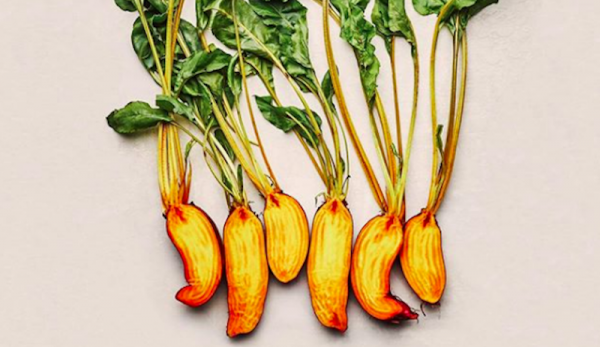
Michael Mazourek’s interest in seeds was sparked during his time as a biochemist PhD student at Cornell.
“My advisor, Molly Jahn, had started programs like the Public Seed Initiative and the Organic Seed Partnership to help create and deliver vegetable varieties to farmers that addressed unmet needs,” explains Mazourek.
“When she left Cornell to try to help in broader ways, her absence was felt in the seed community. And my farm roots led me to step up to continue the mission.”
Alongside chef Dan Barber and seedsman Matthew Goldfarb, Mazourek founded Row 7 Seeds. The venture specializes in bringing the most flavor-packed seeds to chefs and markets around the U.S.
We spoke to Mazourek about the appeal of Koginut squash and the rise of mini-Butternuts. We also got the scoop on the joys of Badger Flame beets.
Get Familiar With Miniature Butternuts
View this post on Instagram
Over the last few years, Mazourek says that he’s noticed miniature Butternut squashes becoming increasingly popular.
“In part because they are a convenient size for shopping and meals,” he says. “But also they got a name as a Honeynut-type squash. Like apples that are sold by variety name, this name association helped create a way for people to recognize these squash as different from other Butternuts.”
Read more: Grow and store fall squash to enjoy all winter long.
Introducing Badger Flame Beets
If you glance at Row 7’s Instagram account, you’ll notice eye-catching Badger Flame beets playing a starring role.
“I’m a very fidgety listener and was pulling some roots from the demo plots during Irwin Goldman’s field day presentation,” recalls Mazourek of how he came across the varietal. “I took out my pocket knife and scraped the dirt and peel away to reveal a vibrant orange with swirls of color.
“I took a bite and was so blown away I interrupted poor Irwin—who was in the middle of his presentation—and exclaimed, ‘Irwin, have you tasted these beets? They’re like a carrot but even better.’ Irwin was very gracious and noted that indeed he had tasted his beets and would talk about them next.”
Mazourek adds that “years later Row 7 Seeds was founded. And Irwin’s Badger Flame beet was one of the few varieties in our launch.”
Read more: Check out these 5 reasons every market farmer need to grow beets.
Squash as Art
Asked about the appeal of Koginut squash, Mazourek calls them “edible art.” He adds that Koginut squash also packs more flavor than a standard pumpkin. They also require fewer spices to pep them up when cooking fall and winter dishes.
The Secret to Roasting Squash
When it comes to cooking with squash for the winter months, Mazourek says he likes to “keep it simple and toast it sliced lengthwise with butter.”
He adds that it’s important to roast your squash longer and at hotter temperatures than you might be used to.
“I roast covered for 45 minutes to an hour depending on the size of my slices, until the squash is hot and steaming. Then uncover, rub the slices with a frozen stick of butter like chapstick. Roast uncovered for about another 30 minutes until super soft but not too caramelized.
“They develop deep, roasty flavors.”
Using Squash as a Serving Vessel
The idea of using a whole squash as a serving vessel has been trending on social media this fall season. If you’re looking to try out the technique at home, Mazourek advises to “use the round seed ends of your butternut squashes!” He says this part of the squash is thinner and cooks differently.
“Brown and drain some maple or herb sausage,” he recommends. “Mix with other fillings like apples for sweet maple or rice for savory herb. Then roast until the filling and mini squash bowls are done.”
Follow Row 7 Seeds at Instagram.




